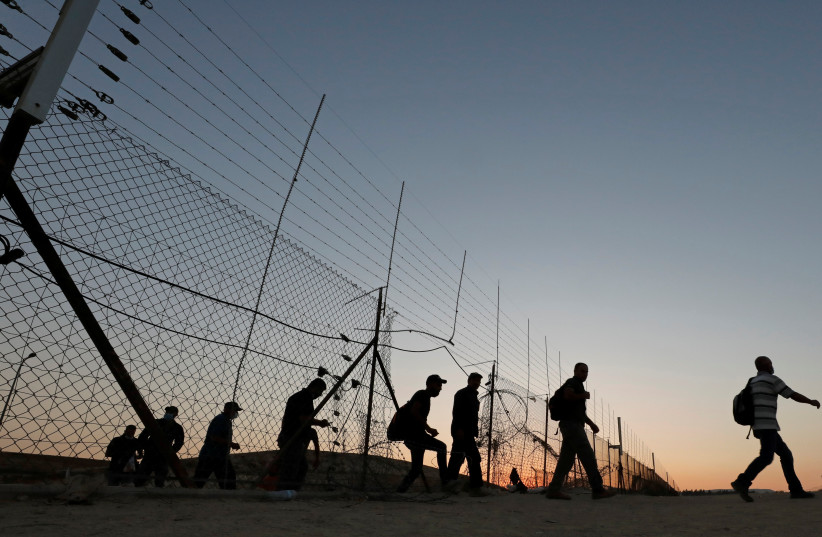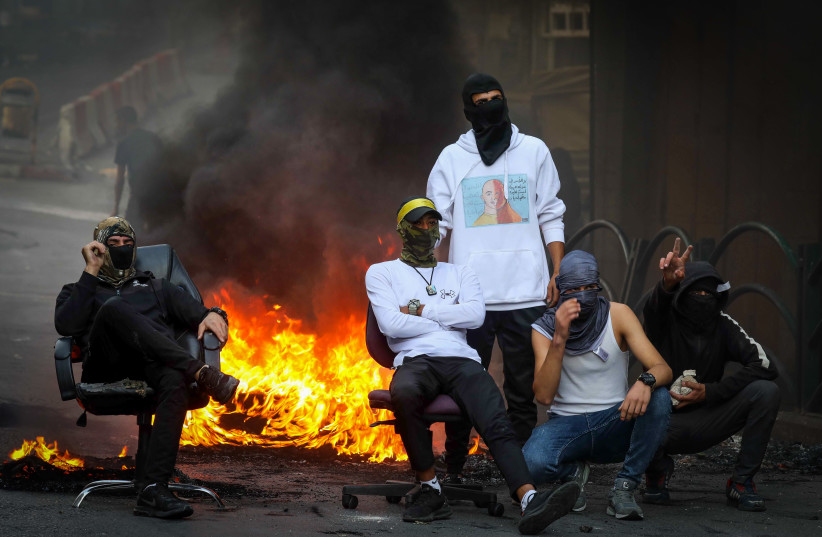The State Comptroller’s Report about the severe lack of the Seam Line security fence in the West Bank is a story of how the whole security and political establishment abandoned the fence and border security in general.
It was first built during the Second Intifada, starting in 2002, to prevent terrorists from easily penetrating deep beyond the Green Line into sovereign Israel, leading to some years of relative quiet from Palestinian areas of the West Bank.
West Bank violence wasn't high on Israel's threat list
From late 2015 until mid-2016, Israel endured the “Knife Intifada” emanating from both the West Bank and east Jerusalem.
But from then until March 2022 – with short blips of escalated violence around the time that former US president Donald Trump announced moving the US Embassy to Jerusalem and some other incidents – the West Bank has not been anywhere near the top of Israel’s major threat list.
It is only within that framework that one can avoid banging one’s head against the proverbial wall in frustration at Israel’s system-wide decision in 2017 essentially to abandon much of its security measures, including upkeep of the large wall.

In other words, according to the report, as well as hints from the Defense Ministry and IDF sources, the IDF decided in 2017 that threats from Hezbollah, Hamas, Iran, ISIS on multiple fronts and Syria were all bigger threats than West Bank terrorism.
The upshot of this shift in focus and security resources was that by 2021, the report said, a staggering 1.4 million Palestinians were illegally infiltrating Israel per year, with some days hitting levels of 6,000 infiltrations over 24 hours.
But let’s put that on the side for a moment.
In the short term, the IDF’s hard-nosed 2017 calculation would seem to make a lot of sense.
Even back then, Hezbollah had well over 100,000 rockets and full-fledged military forces, Hamas had more than 10,000 rockets and military forces, Iran was trying to move devastating advanced weapons to Syria, and ISIS was a force that was causing the entire planet to shudder.
At its worst, West Bank terrorism is a series of waves of often not entirely connected stabbings or car-rammings by individuals, with larger “operations” still usually involving not more than two or three persons at a time.
Riots of hundreds of people throwing rocks and Molotov cocktails do not present anywhere near the threat that other threats to the Jewish state presented.
So if you have limited funds and soldiers, you reallocate them from time to time from the less dangerous and heated fronts to the most dangerous ones.
Lessons not learned from Hamas attack tunnel crisis
Prime Minister Benjamin Netanyahu’s and former prime minister Naftali Bennett’s identical decisions to let the IDF go forward with abandoning West Bank border security would also seem to make sense in the short term.
Except that both of them should have learned from the crisis of the Hamas attack tunnels.
For nearly a decade from the mid-2000s until the 2014 Gaza War, Netanyahu and the IDF ignored Hamas’s ongoing attack-tunnel capabilities.
Only after the IDF was ambushed multiple times by Hamas terrorists using attack tunnels, some of which went relatively far into sovereign Israeli territory, did the defense establishment and Netanyahu take the issue seriously.
Former IDF chief of staff Gadi Eisenkot once explained the dilemma in his very frank, non-politically correct way, saying that until a certain number of Israelis were killed via attack tunnels, no one was willing to spend money on fighting them, versus other more obvious national security threats.
But it seems no one learned the attack-tunnel lesson, and despite five years of warnings and many incidents of terrorists killing Israelis in the Green Line because of poor West Bank border security, the IDF, Netanyahu and later Bennett ignored the issue.
The border was just too long and not enough Israelis had been killed by West Bank border terrorism – until last March.
West Bank terror became a major threat in 2022
When 11 Israelis were killed within a very short period of time, everyone woke up and realized that around 50% of the existing West Bank security barrier needed to be rebuilt or fixed, that more patrolling was needed on the border, that expensive electronic surveillance needed to be installed and that certain portions of the wall that were never completed needed to be finished.
Toward the end of the year, when it seemed that the earlier wave of terrorism had subsided for a few weeks, the IDF was already loudly trumpeting its hope to move its West Bank border reinforcements quickly back to “important” places in the North and the South.
It seems we may never learn.
More broadly, since 2014, no government has tried even a small-scale diplomatic move to provide West Bank Palestinians with some kind of optimistic horizon. What that horizon actually is may be less important than just providing some ray of hope for an improved existence.

Also, assuming that there will not be any paradigm shift toward a diplomatic grand bargain, there seems to be a lack of understanding that the Palestinians will not simply go away.
One can certainly view negotiations with the Palestinians as futile, but in that case, recognizing that the IDF needs to commit permanently to guarding the West Bank border and repairing holes in the wall is even more critical.
Temporary downturns of a few months or maybe years need to be understood as exactly that – temporary, as opposed to patting ourselves on the back and thinking that the West Bank, absent any diplomatic change, will remain quiet indefinitely.
This will require huge continued resources and the draining of resources from other fronts.
But in the middle of this fourth large wave of violence (since no one likes to call it, or even “the Knife Intifada,” a full intifada), there is an opportunity to learn and prevent a fifth similar wave somewhere further down the road.
